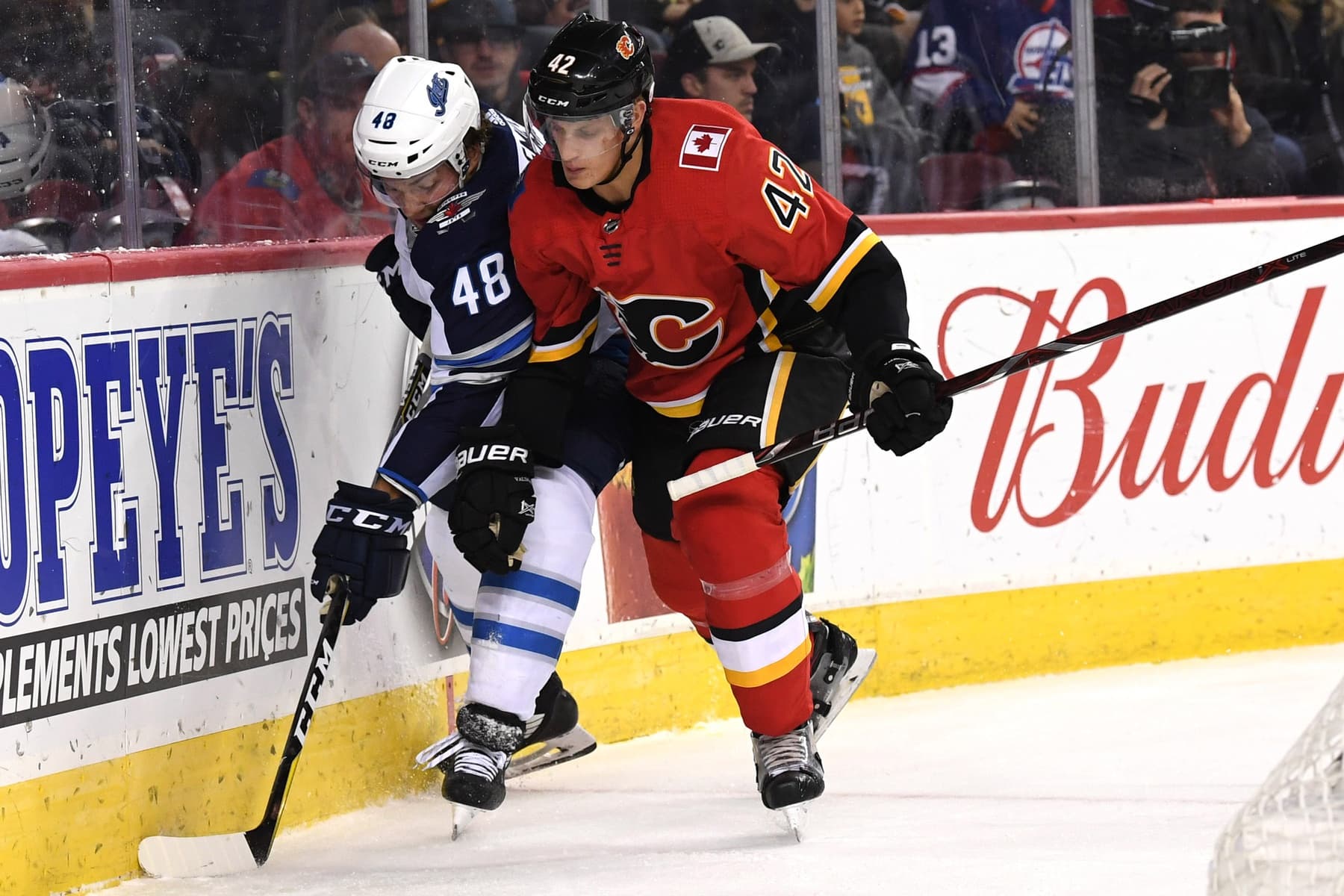Valimaki’s injury adds complications going forward

By Ryan Pike
4 years agoCalgary Flames super prospect Juuso Valimaki is going to miss a lot of time after suffering an ACL injury during off-season training. Not only will the Flames be without the services of one of their most exciting prospects, but his injury brings along with it a few complications for the club going into the season.
The salary cap
Under the terms of the CBA, because Valimaki spent most of last season with the Flames – he was on the roster for roughly 60 regular season games between being active and being injured – he’s treated as an NHL regular going forward. That means that under Section 15.6 of the CBA, his salary isn’t buried during his injury.

The Flames will be on the hook for all of Valimaki’s $894,000 cap hit.
Remember how we had several discussions here where we hand-wrung over the Flames’ lack of space? Well, they’re going to have even less of it to start the year because they need to cover Valimaki’s salary and also replace him on the roster. (We haven’t read his contract, but generally much of an injured player’s salary is paid via the league’s insurance so they’ll get a bit of a financial reprieve.)
Long-term injury reserve
We all became LTIR experts during Ladislav Smid’s lengthy stint on the shelf a few seasons ago, but here’s the gist of how it works: if you throw a player on LTIR, your team can exceed the cap ceiling by the difference between the player’s cap hit and the cap space you have left before you put them on LTIR.
In other words, the Flames will need to be cap compliant on Oct. 1 when they file their roster (which will include Valimaki on the “regular” injury reserve list) with the league. To get the maximum relief from his LTIR status, they’ll try to squish themselves as close to the cap as they can before enacting LTIR.
A few other LTIR notes: it can be enacted retroactively – it’s sometimes used for teams to wriggle free of a situation where they don’t have enough cap to recall a player mid-season – and if they expect Valimaki to be out all season, they don’t need to worry about fixing their cap situation when they activate him. If he’s ready to go in the playoffs, when the cap does not exist, they can activate him without penalty.
We’ll have more on the cap situation as we get closer to the season, but the Flames are in a bit of trouble – more than they were before this injury – but now have a tool at their disposal to get creative.
The expansion draft
Valimaki was on the Flames roster for 40+ games last season, which counted as his first year of pro service. He’ll be on the Flames roster this coming season, albeit on the IR, and so it’ll count as his second year of pro service as it’s been defined by the CBA.
His injury does not impact his expansion draft eligibility. He will be eligible for selection by Seattle in 2021.
A hypothetical situation
Let’s just say that Brad Treliving wants to do the least mucking around with his roster that he can. Is it possible to slot Oliver Kylington into Valimaki’s roster spot, enact LTIR and remain cap compliant? The short answer is “yes, but…”
Gaudreau – Monahan – Lindholm
Tkachuk – Backlund – Bennett
Frolik – Ryan – Czarnik
Mangiapane – Jankowski – Lucic
Extra: Quine
Tkachuk – Backlund – Bennett
Frolik – Ryan – Czarnik
Mangiapane – Jankowski – Lucic
Extra: Quine
Giordano – Brodie
Hanifin – Hamonic
Kylington – Andersson
Extra: Davidson
Hanifin – Hamonic
Kylington – Andersson
Extra: Davidson
Rittich
Talbot
Talbot
Buyouts: Brouwer, Stone
The total cap hit of the above group, presuming a $7.5 million AAV for Tkachuk and $1 million for Mangiapane), is $82.16 million. That’s $660,041 over the cap, a game that could be bridged by enacting LTIR on Valimaki’s $894,000 – which would give the Flames a massive $234,000 cap cushion.
If Treliving goes with his in-house budget options, the team is compliant but has absolutely no wiggle room to add, subtract or adjust mid-season. If he goes to market to try to find some additional depth – potentially somebody pricier than Kylington’s $730,000 AAV – then he’ll have even more work to do.
Recent articles from Ryan Pike





